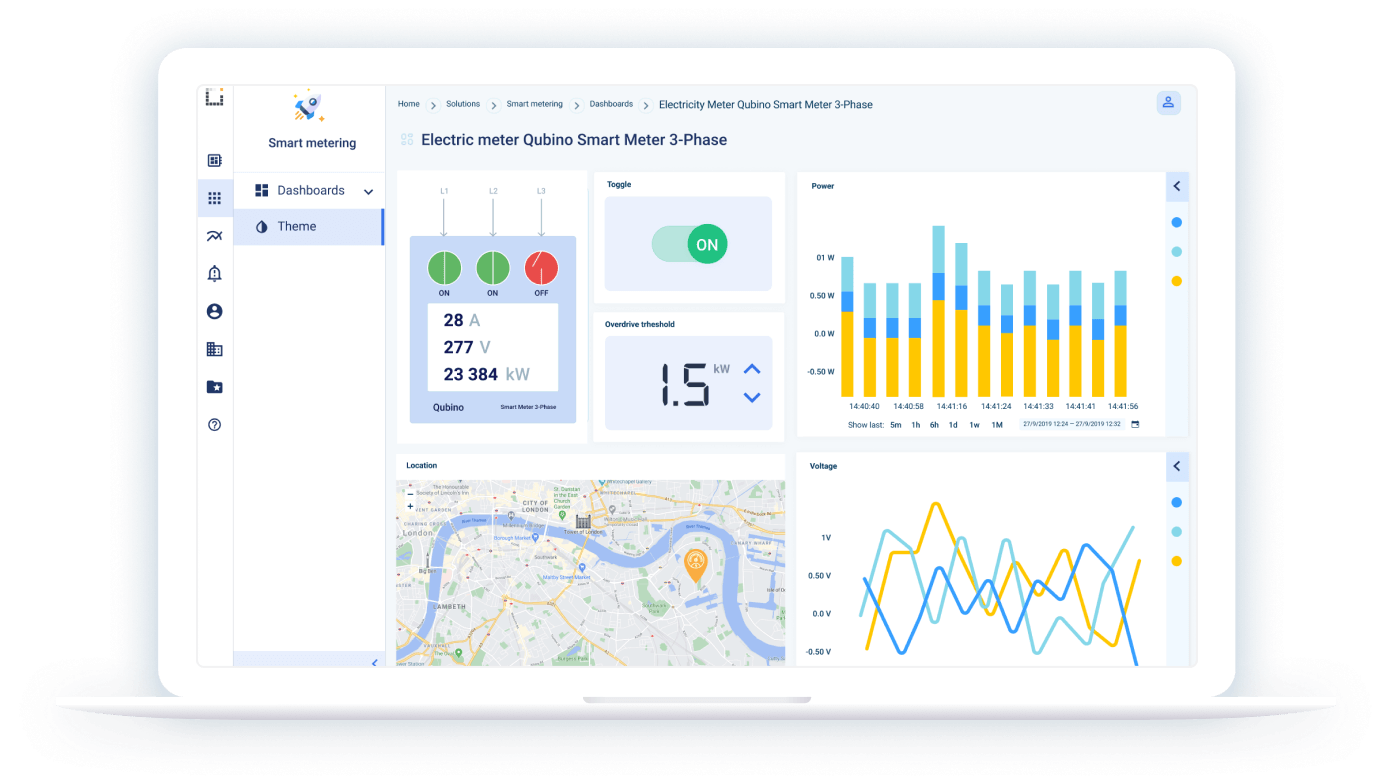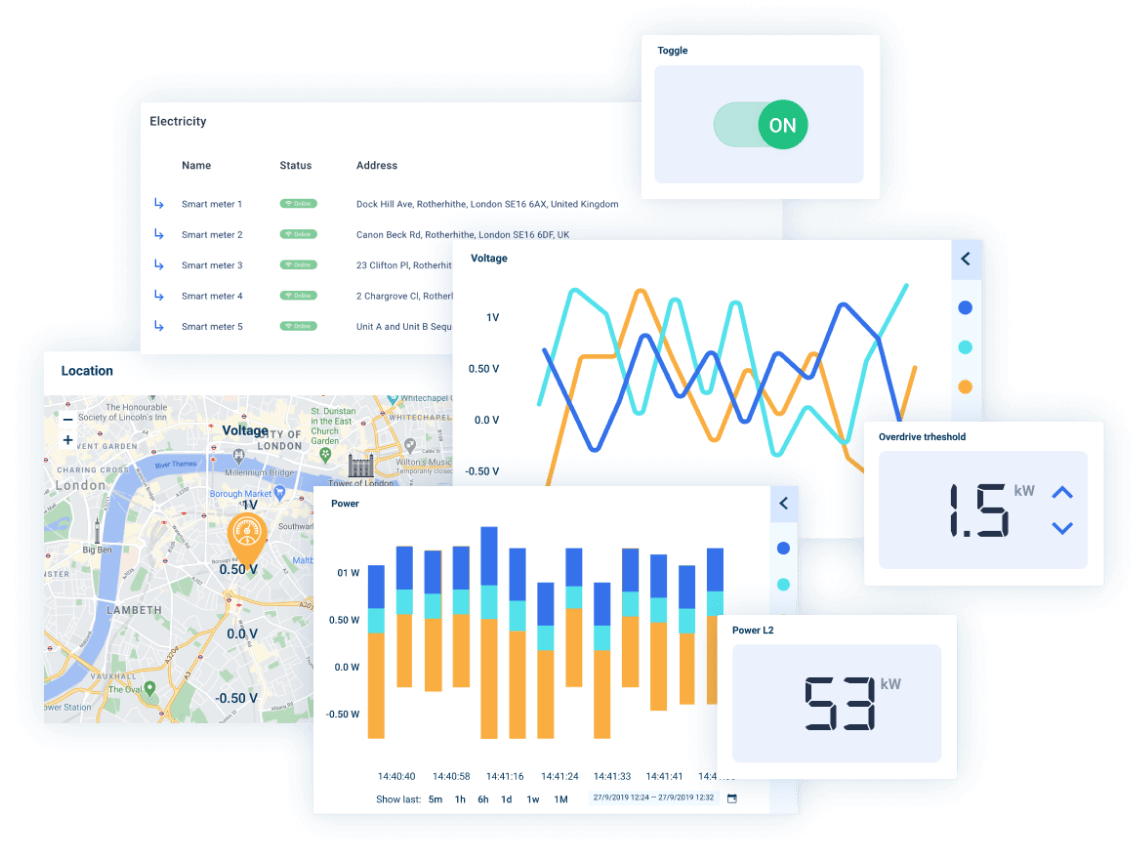Smart meter manufacturers can take advantage of an IoT platform for a number of use cases: from running remote software updates and tracking performance of their devices to offering a full-scale IoT smart metering application for their customers. OEMs who provide a flexible IoT solution together with the device will have a significant edge over the competition, that’s why fully adopting IoT technology is so important for hardware manufacturers. With the right IoT platform, developing a customer-centric smart metering solution is rather straightforward. It is also easier to create personalized versions of the solution for important clients if it is built on a flexible IoT platform rather than hard-wired with a limited number of functions and capabilities.
Using an IoT smart metering solution for their devices, manufacturers can simplify their product development and user analytics tasks.
First, rolling out new software can be done in a few clicks. You can segregate them by customer, release version, location, etc. You can also maintain several versions at once in your system. Second, you can collect device performance data to pre-empt malfunction, run tests, and track other KPIs according to your product specification. You can also use this data to validate warranty claims.
What’s especially convenient, modern IoT platforms provide flexible user access management that enables manufacturers to use the same platform instance for multiple user roles. Device managers will log in to a workspace with their unique dashboards and device management access rights while customers will only see their metering dashboards, alerts, and analytics charts. One platform can serve both parties, vendors and customers, at the same time.








